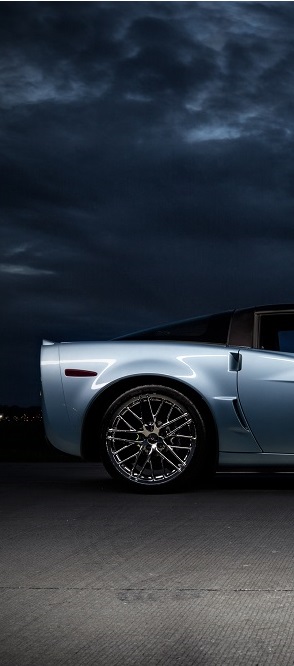

Caterham Seven—Inception to 2004
Caterham 7 or Caterham Seven, either moniker works, commenced operations in 1972 by purchasing the rights to build automobiles using the defunct Lotus Seven-designed frame. The company, based in the UK, has built bot kit cars as well as fully assembled units ever since; 2007 marked its fiftieth year in business and the fiftieth year of building the Caterham 7 sports car. The company is ready to protect its rights to exclusive use of the Lotus design although not long ago, it lost a court case in South Africa to a competitor called Birkin that was building the same design there.
© Toynutz | Dreamstime.com Lotus Caterham Super Seven
As stated, based on the Lotus Seven, the Caterham Seven is a two-seated lightweight sports car available to assemble in your garage or purchase ready to drive away from the manufacturer. The modern Caterham 7 bears no resemblance to the original Lotus Seven; in fact, there’s no part on the new Caterham version that’s the same. These new cars are all-new component designs blended with classical styling in the tradition of the original Lotus 7 as its founder, Colin Chapman, aspired to.
The man was a pilot in the Royal Air Force who, after studying structural engineering, went on to become a race driver and then one of the foremost engineers in motorsport history. His motto was to make it simple and keep it lightweight; his first Lotus Seven appeared in 1957 at the Earls Court Motor Show in London. This car was one of Chapman’s greatest achievements: a simply designed two-seated sports car, lightweight with superb handling and powered by a large engine.
The new owners have been refining and upgrading the original design ever since. The new owners’ first production was the Super, then the series 4, a reversion to a series 3 in 1974, and this remained the base for the next 18 years. After a short sojourn into a steel/ fiberglass body on the dead-end Caterham 4, the skin stayed with stressed aluminum panels. The frame has had some major revisions to accommodate a variety of engines and upgraded suspension features. The earliest models used a live rear axle sourced originally from Ford, and later from the mid-’80s, the live axle came from “Morris Ital de Dion” rear suspension with both geometries available until 2002 when the live axle was phased out entirely.
The Caterham now sports an adjustable double wishbone suspension incorporating a front anti-roll bar with a de dion rear axle located with an A-frame and Watt’s linkage. All the chassis remained based on the Series 3 design until 2000 when the Special Vehicle chassis (SV, or series V) came online offering an additional 110 mm (4.3 inches) of space to oblige a growing number of prospective clients who couldn’t fit into the driver’s seat, and this also adds 25 kg (55 pounds) to the curb weight. Now the Caterham is available with either frame to meet a very large proportion of any-sized customer needs for both available models, the Roadsport and the Superlight variations.
© Johnbraid | Dreamstime.com Lotus / Caterham 7 Cars
The 2004 model year saw the release of the Caterham CSR with the SV chassis a totally revised inboard front suspension incorporating push rods, while the rear discarded the de-dion axle in favor of a lighter and fully independent double-wishbone setup incorporating new coil/damper versions. The CV chassis received upgrades, and with the 2004 version, it had the torsional stiffness upgraded by 25 percent. Under the hood is a sourced Cosworth Duratec engine in either a basic 200 bhp (150 kW) version or the 260 bhp (194 kW) for more get up and go.
Republished by Blog Post Promoter








